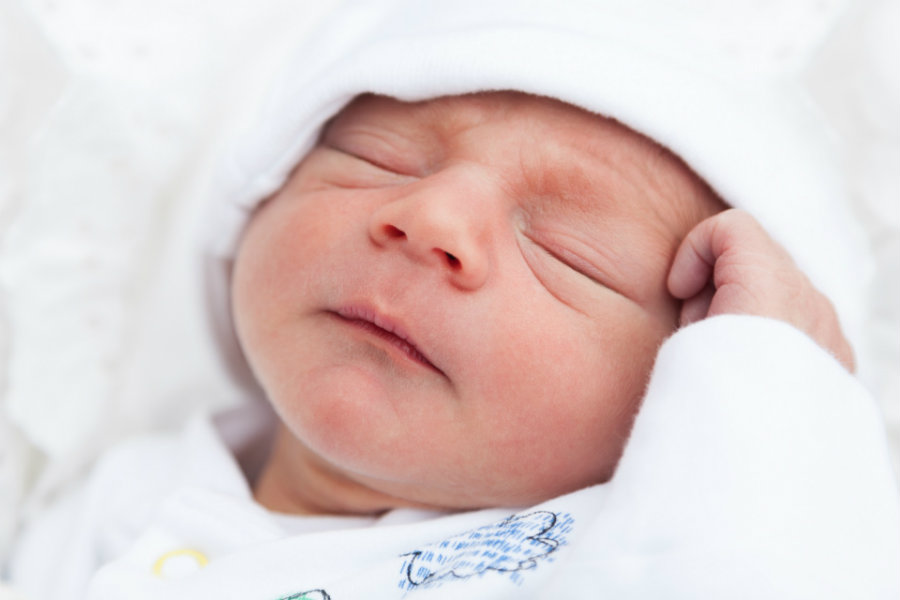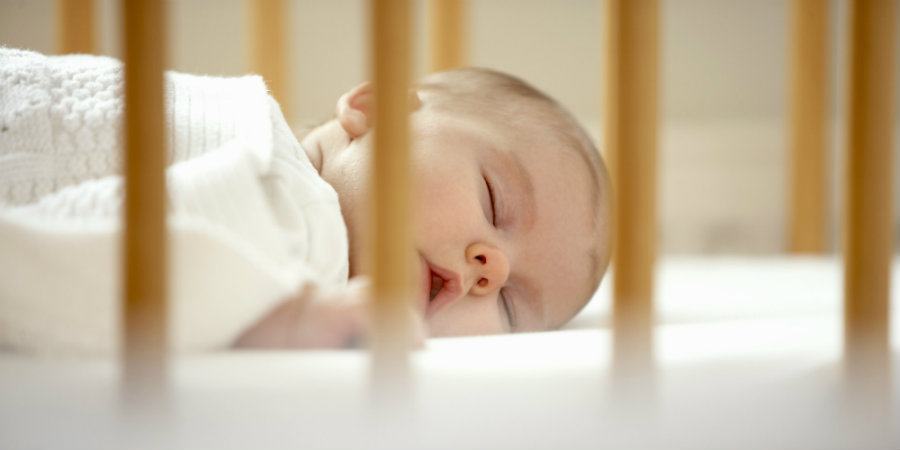San Francisco – The American Academy of Pediatrics (APP) announced Monday new recommendations to decrease the risks of sleep-related deaths. Children should sleep in the same room as their parents at least for the first six months, on a separate surface, such as a crib or a bassinet, and never on a soft surface.
Smooth surfaces increase the risk of deaths in babies while they sleep. Newborns need a firm surface to breath properly, and the AAP new guidelines only recommend a crib or bassinet to put the baby to sleep, avoiding pillows and thick blankets. Soft surfaces such as couches and armchairs, even if the baby is sleeping with someone, are considered hazardous for the infant.

The AAP new policy recommends parents to share their bedroom with their child but in a separate surface for at least the first six months. Although, optimally, the baby should sleep in the same room with the parents for the first year to significantly reduce risks of sudden infant death syndrome (SIDS).
The highest risk of SIDS come when the child is between one and four months old. But new evidence indicates that soft bedding continues to be dangerous for infants who are four months or older.
Rachel Moon, MD, FAAP and lead author of the report said she understands that parents may be overwhelmed with a new baby. Thus, the AAP’s goal is to provide clear and straightforward guidance on how and where to put their infant to sleep to reduce risks of any sleep-related deaths.
Moon emphasized that babies should never be placed on a sofa, couch or cushioned chair, no matter if someone is with the infant or not. Soft surfaces are a danger for children’s breathing and must be avoided.
Among the AAP new policy on creating a safe sleep environment for infants, it is recommended to place the baby on his or her back on a firm surface – on a crib or a bassinet- with a tight-fitting sheet. Soft bedding such as crib bumpers, blankets, pillows and soft toys should be outside the crib or bassinet. The firm surface should be bare.
Room-sharing is essential to reduce risks for babies. According to the AAP, sleeping in the same room as your infant can decrease the risk of SIDS by as much as 50 percent. Another thing to do to keep children safe from SIDS is to keep them away from smoke, alcohol, and illicit drugs.
Skin-to-skin care is also recommended immediately following birth for at least an hour as soon as the mother is medically stable and conscious, regardless feeding or delivery method.
According to the new guidelines, breastfeeding is also recommended to avoid SIDS. And when parents feel exhausted or feel they may fall asleep when feeding the baby, Lori Feldman-Winter, MD, FAAP, a member of the Task Force on Sids and co-author of the report, says to feed the baby in their bed and not in a sofa or cushion chair. This is a measure to avoid those soft surfaces.
Feldman-Winter added that as soon as parents wake up, they should put the baby on the separate surface in their bedroom, making sure there are no pillows or any other item that could obstruct the baby’s breathing or cause overheating.
This is the first AAP update on recommendations to decrease risks of SIDS since 2011
The policy statement and the report “SIDS and Other Sleep-related Infant Deaths: Updates 2016 Recommendations for a Safe Infant Sleeping Environment” will be released Monday at the AAP National Conference & Exhibition in San Francisco.
The report is the first update to Academy policy regarding SIDS recommendations since 2011. It will be published in the November 2016 issue of Pediatrics and online October 24.

“We want to share this information in a way that doesn’t scare parents but helps to explain the real risks posed by an unsafe sleep environment. We know that we can keep a baby safer without spending a lot of money on home monitoring gadgets but through simple precautionary measures,” Dr. Moon said in the press release.
Statistics show that approximately 3,500 infants die annually in the United States from sleep-related deaths, including sudden infant death syndrome, accidental suffocation, and strangulation and ill-defined deaths. The number of child deaths has been the almost the same since the 1990s and the AAP want to reduce the numbers every year.
Additional recommendations to keep your baby safe while he or she sleeps
The AAP recommend physicians to have open conversations with families about sleeping habits and practices avoiding a judgemental approach. Doctors should warn parents that not all media outlets are useful when taking care of their baby, but they can use those who actually can educate them about safe sleep. Images and messages can be used to explain better the recommendations to parents.
Other recommendations included in the report are to use a pacifier at naptime and bedtime and avoid home monitors or commercial devices marketed to reduce the risk of SIDS, which has not been proved.
Babies should receive all the recommended vaccinations and, according to the report, supervised, awake tummy time is an active method to facilitate the child’s development.
The report and new guidelines will be presented Monday at the national conference at the Moscone Center in San Francisco. The news conference will be recorded and available for viewing afterward to make sure people can have access to the new guidelines and help prevent SIDS-related deaths.
Source: AAP

“Skin to skin contact… for at least AN HOUR”???? This should be done for days, if not weeks as much as possible. The baby has spent 9 months in the womb with total contact 24-7, and needs constant contact with mother for many hours and days immediately after birth.